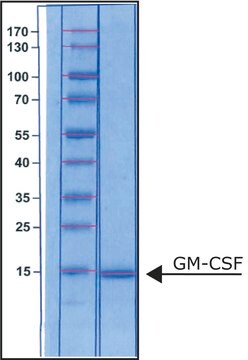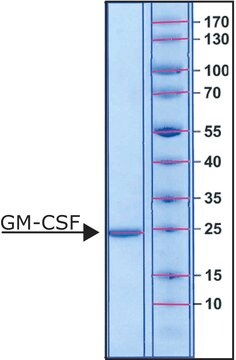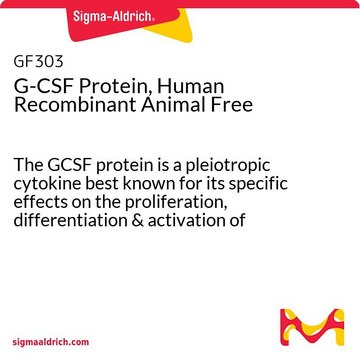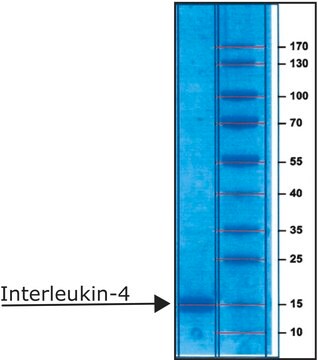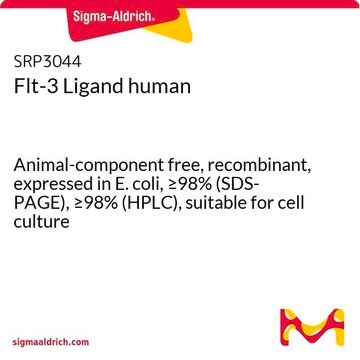G8160
Granulocyte Colony-Stimulating Factor from mouse
>97% (SDS-PAGE), recombinant, expressed in E. coli, lyophilized powder, suitable for cell culture
Synonym(s):
G-CSF
About This Item
Recommended Products
Product Name
Granulocyte Colony-Stimulating Factor from mouse, G-CSF, recombinant, expressed in E. coli, suitable for cell culture
biological source
mouse
Quality Level
recombinant
expressed in E. coli
Assay
>97% (SDS-PAGE)
form
lyophilized powder
potency
10-60 pg/mL ED50
quality
endotoxin tested
mol wt
19 kDa (179 amino acids including N-terminal methionine)
packaging
pkg of 5 and 25 μg
storage condition
avoid repeated freeze/thaw cycles
technique(s)
cell culture | mammalian: suitable
impurities
≤0.01 EU/μg
UniProt accession no.
storage temp.
−20°C
Gene Information
mouse ... Csf3(12985) , Csf3r(12986)
General description
Application
Biochem/physiol Actions
Physical form
Analysis Note
Legal Information
related product
Signal Word
Warning
Hazard Statements
Precautionary Statements
Hazard Classifications
Eye Irrit. 2 - STOT SE 3
Target Organs
Respiratory system
Storage Class Code
11 - Combustible Solids
WGK
WGK 3
Flash Point(F)
Not applicable
Flash Point(C)
Not applicable
Personal Protective Equipment
Choose from one of the most recent versions:
Already Own This Product?
Find documentation for the products that you have recently purchased in the Document Library.
Our team of scientists has experience in all areas of research including Life Science, Material Science, Chemical Synthesis, Chromatography, Analytical and many others.
Contact Technical Service
